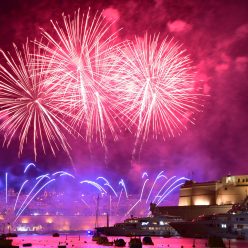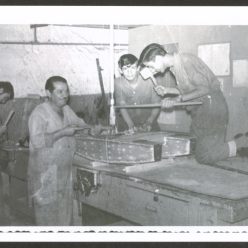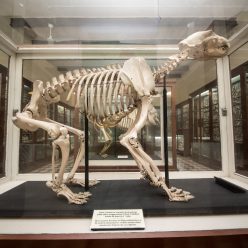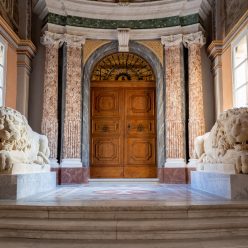In collaboration with Heritage Malta and the Malta Classics Association, University of Malta?s Evenings on Campus 2012 presents an exhibition of illustrations of Ovid?s Metamorphoses by the German artist, Monika Beisner.
 Like Ovid, Monika Beisner is essentially an artist who, through her images, loves to tell stories, and who tells them with the greatest carefulness and complexity. Surprising, therefore, is the playful and child-like appearance of her images . . . only if one omits to note that Ovid too is engaged in a game of sorts ? the game of representing to his cultured and otiose readers in fourth Century Rome a reality of mythical creatures, beings and gods to which, up to that point, no one had dared give visibility or character. Thus it is that from the pages of his Metamorphoses, dense with the detail of overlapping and frequently concentric narratives, springs forth a vast array of mental images, each one superimposed on the other, almost as if this unbridled poetic imagination could not bear to tolerate even the mere suspicion of a void during the course of its fervid narrative.
Like Ovid, Monika Beisner is essentially an artist who, through her images, loves to tell stories, and who tells them with the greatest carefulness and complexity. Surprising, therefore, is the playful and child-like appearance of her images . . . only if one omits to note that Ovid too is engaged in a game of sorts ? the game of representing to his cultured and otiose readers in fourth Century Rome a reality of mythical creatures, beings and gods to which, up to that point, no one had dared give visibility or character. Thus it is that from the pages of his Metamorphoses, dense with the detail of overlapping and frequently concentric narratives, springs forth a vast array of mental images, each one superimposed on the other, almost as if this unbridled poetic imagination could not bear to tolerate even the mere suspicion of a void during the course of its fervid narrative.
Ovid effectively gives tangibility to human and divine forms and forms in nature which all undergo some change in the process of unraveling the constraints of their impossible predicament. Monika Beisner has given this tangibility a further dimension with images that, in their captivating aliveness, communicate the intensity of the human (and not so human) passions which crowd the pages of the Metamorphoses. But this alone does not do justice to Beisner?s work. For each glowing image which she offers us, under the title of one of Ovid?s many metamorphoses, is not merely an illustration of a tale ? it itself has also an independent dimension. The artist?s eye clearly looks upon the diversity in creation and perceives line and texture with the simplicity of a child, joyfully bringing into being new forms and new shapes just like the Roman poet whose incandescent Latin verses she has perfectly captured with her own poetry of colour and minute detail.
The story of Deucalion and Pyrrha who, having been advised to throw their mother?s (earth?s) bones behind them, witness the transformation of cold stone into the warmth of living, breathing human flesh, is depicted in sequence within the spiral pattern which is itself the perfect cross-section of a shell. The human race, wiped out by a great flood, will like the spiral expand and regenerate. 
More astonishing in its limpidity is Beisner?s rendering of Daedalus and Icarus ? father and son depicted as one consciousness of which the son ? a fallen, blackened form, defeated by his own recklessness, appears as the mirror image of the father ? golden and borne aloft against a piercing blue sky. Is this a new dimension to Ovid?s tale? Is the dark side of the self therefore more imminent than we care to think ? as imminent as one?s own shadow?
Monika Beisner enjoys an international reputation for her illustrations of children?s books and she has exhibited worldwide. Her illustrations of Dante?s Divine Comedy (2005) have been published in Germany and Italy. She is currently working on the epic of Gilgamesh.
Latest News
Press Releases | 19th April 2024
A Vibrant Special Opening at Fort Delimara
Press Releases | 8th April 2024
Objects Missing From the Grand Master’s Palace




